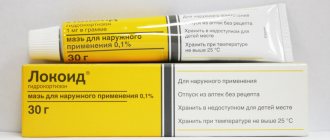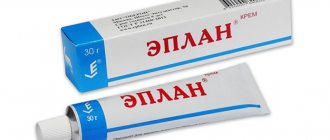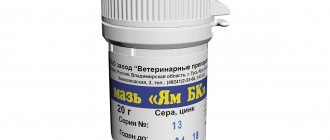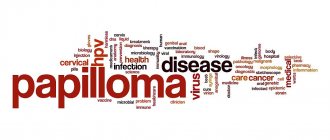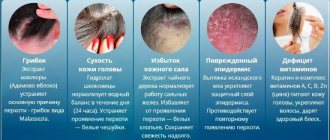To treat psoriasis, neurodermatitis, eczema and other skin diseases, various ointments are used, including those based on hydrocortisone. Such drugs include Lokoid cream. It has a quick effect and is safe for health. Suitable for both adults and children aged 6 months and older. You can buy the product at an affordable price and without a prescription.
Lokoid cream: description
The drug is a thick, translucent ointment for external use only. The composition includes the active ingredient hydrocortisone in the form of butyrate - a concentration of 1 mg per 1 g or 0.1%. Auxiliary components are a base with petroleum jelly and polyethylene.
The ointment is packaged in aluminum tubes weighing 30 g. It can be stored under normal room conditions at temperatures up to 25 degrees Celsius. It is necessary to exclude access to direct sunlight and also keep it away from children. The ointment can be used within the general shelf life of 5 years from the date of production.
How do the means differ from each other?
As mentioned above, these dosage forms of Lokoid have differences in the composition and consistency of the product. These indicators determine the primary area of application of each product.
- The difference is in composition . The basis of Lokoid cream is water and paraffin, and the ointment is Vaseline oil. These excipients, despite the presence of a common active ingredient, provide a significant difference in the properties of these substances.
- The difference is in consistency . Thanks to its composition, the cream has a light consistency and is quickly absorbed from the surface of the skin. The ointment has a greasy, viscous texture. The ointment form is characterized by the formation of a film; it remains on the skin for a long time.
- The difference is in application . Despite the fact that the instructions for both forms of the drug indicate the same indications, there is still a difference in use. The cream is used for acute processes, as well as subacute skin pathologies. The ointment is used for chronic diseases.
Pharmacodynamics
The components of the drug esterify the hydrocortisone molecule, combining with butyric acid. This leads to a significant increase in chemical activity compared to native compounds. The product inhibits inflammatory processes, reduces itching and swelling.
If the dosage is observed, the drug acts safely for health and does not suppress the hypothalamic, pituitary and adrenal systems. Moreover, if used in large doses for a long period, the content of cortisol in the bloodstream may increase. But as a rule, this does not lead to a deterioration in the functioning of the pituitary gland and adrenal glands. In addition, stopping treatment almost immediately normalizes cortisol synthesis.
After use, the active substance quickly accumulates in the superficial tissues of the skin, mainly in the granular layers of the epidermis. Penetration into the bloodstream is negligible. The substance is processed mainly in the tissues of the skin, and is partially excreted in the urine and through the intestines in the same form.
Instructions for use of Lokoid (Method and dosage)
Cream Lokoid, instructions for use
Lokoid cream is intended for local (external) use mainly for the treatment of subacute and acute negative skin processes.
Depending on the location and severity of skin lesions, applying a thin layer of cream to problem areas of the skin 1-3 times a day is recommended. In order to improve the penetration of the cream into the epidermis , its application should be carried out with light massaging movements of the palms of the hands. If positive dynamics of therapy occur, the frequency of use of the cream can be reduced to 2-3 times every 7 days. The total weekly dose of the drug should not exceed 30-60 grams.
Lokoid ointment, instructions for use
Lokoid ointment is intended for local (external) use for the treatment of subacute and chronic negative skin processes, especially with manifestations of infiltration , lichenification , and dryness .
Depending on the location and severity of skin lesions, applying a thin layer of ointment to problem areas of the skin 1-3 times a day is recommended. In order to improve the penetration of the ointment into the epidermis , its application should be carried out with light massaging movements of the palms of the hands. If positive dynamics of therapy occur, the frequency of use of the ointment can be reduced to 2-3 times every 7 days. In cases of insufficient effectiveness of such treatment, for example, with the accumulation of psoriatic formations (dense plaques) on the knee or elbow joints, it is possible to apply ointment under occlusive dressings . The total weekly dose of the drug should not exceed 30-60 grams.
Indications
Lokoid is a hormone belonging to the group of glucocorticoids. Use only under close medical supervision. The main indications for use are:
- psoriasis (as an additional therapeutic measure);
- neurodermatitis;
- barley;
- eczema;
- allergic reactions;
- conjunctivitis;
- reaction to insect bites;
- itching of the skin of various nature;
- shock - treatment and preventive measures.
Indications for use
The use of Lokoid ointment and cream is indicated for the treatment of superficial, non-infected skin diseases sensitive to the effects of local glucocorticoids:
- eczema;
- dermatitis (including seborrheic , contact, atopic );
- psoriasis.
Contraindications and side effects
In some cases the drug cannot be used:
- bacterial skin infections;
- viral infectious skin lesions;
- fungal infections;
- syphilis;
- tuberculosis;
- infections associated with parasites;
- skin tumors of various natures, including cancer;
- period after vaccination;
- wounds, ulcers;
- individual intolerance to components;
- all stages of pregnancy;
- feeding period.
The drug is safe for health, but in some cases it can cause allergic reactions, including itching and irritation. They do not require treatment and go away on their own after you stop taking them.
Also, during long-term treatment, systemic side effects are possible. The risks of their occurrence are not as high compared to the use of fluorinated steroids.
Signs of hypercortisolism may occur, including:
- the skin becomes very sensitive;
- wounds and bruises take a long time to heal, poorly;
- menstrual irregularities;
- skin rash;
- increased hair growth;
- general weakness;
- rapid weight gain;
- increase in pressure;
- anxiety, mood disorders;
- depressive states;
- sleep disorders.
Such symptoms appear rarely and only after prolonged use. If at least one of the described effects is detected, you should stop therapy and immediately consult a doctor to prescribe a course of treatment.
Lokoid
Lokoid (hydrocortisone 17-butyrate) is a topical synthetic glucocorticosteroid drug for use in dermatological practice. Used to treat eczematous skin lesions, dermatitis, scaly lichen (psoriasis). It has a rapidly developing anti-inflammatory, antiexudative, antipruritic effect. The use of the drug in the doses stated by the manufacturer does not inhibit the hypothalamic-pituitary-adrenal axis. Submaximal and maximum doses of Lokoid when used over a long period (including when using the drug under an airtight bandage) can increase the level of the stress hormone cortisol in the blood, but this does not affect the activity of the pituitary-adrenal system, and after the end of the drug course The secretion of cortisol is normalized as soon as possible. After hydrocortisone is absorbed through the skin, 17-butyrate undergoes a series of metabolic transformations to hydrocortisone and a number of other metabolites. It is excreted from the body by the kidneys and intestines. Lokoid is contraindicated in cases of rosacea, acne, localized on the face, dermatitis in the perioral area, itching in the genital and anal area, dermatitis with concomitant bacterial, viral or fungal infection, individual intolerance to the active or auxiliary components. The use of the drug during pregnancy and breastfeeding is allowed only after assessing the benefit/risk ratio.
Frequency of use: 1-3 times a day. If the clinical situation develops positively, the frequency of dosing is reduced to 1-3 times a week. To improve the absorption of the drug, its application is carried out with repeated massage movements. In case of a pathological process that is resistant to therapeutic effects (for example, in the presence of psoriasis in the elbows and knees), the drug is used under an airtight bandage. The maximum weekly dose is 30-60 g. Adverse effects when using the drug are skin irritation. With prolonged use or application over large areas, Lokoid may provoke the development of systemic side effects characteristic of glucocorticosteroids, however, this drug will have a lower risk than halogenated glucocorticosteroids. Using the drug under a sealed bandage increases the risk of systemic side effects. Lokoid is suitable for use in pediatric practice from the age of six months. If Lokoid is intended to be used on the skin of the face or under an airtight bandage, then the duration of the medication course is recommended to be reduced. When using the drug in pediatric practice, patients may experience inhibition of growth hormone secretion. The use of Lokoid in patients of this age group involves monitoring anthropometric parameters and the level of cortisol in the blood.
special instructions
The product should not be applied to the area near the eyes (eyelids), as this may lead to the development of glaucoma. If the drug constantly gets on the conjunctiva, this can cause an increase in intraocular pressure.
If dry eyes are severe, hyperkeratosis is observed, the drug is used only in the form of an ointment, lipocrem is also available. The ointment should not be used if atrophic changes in the skin are diagnosed.
It should be remembered that the risk of side effects increases when applied to large areas of the body, as well as during prolonged use.
If the therapeutic effect does not occur within 2 weeks (reception is carried out in a row), therapy should be discontinued and consult a doctor to clarify the diagnosis.
Contraindications
Some painful conditions of the human body are incompatible with the use of local hormonal drugs, including Lokoid cream and ointment, for which they are contraindicated in:
- violations of the integrity of the epidermis (including skin wounds and ulcers);
- personal hypersensitivity to hydrocortisone or minor ingredients of the drug;
- neoplastic transformations of the skin ( malignant and benign tumors );
- bacterial skin infections (gram-negative folliculitis , staphyloderma , streptoderma , etc.);
- rosacea (rosacea);
- viral skin infections ( shingles , chicken pox , herpes simplex , etc.);
- perioral dermatitis;
- fungal skin lesions;
- acne (acne);
- parasitic skin lesions;
- syphilitic and tuberculous changes in the skin;
- in the post-vaccination period;
- in infancy up to 6 months.
Pregnant and lactating women require special caution in prescribing Lokoid
Use in pediatrics
The ointment can be prescribed to children from 6 months, but only under the supervision of a doctor. If the product is applied using occlusive dressings or on the skin of the face, the course of therapy should be reduced to a minimum. In this case, the maximum area of the treated cover should be less than 20% of the entire surface.
It should be noted that in children, adrenal suppression may manifest itself more quickly. A decrease in the synthesis of growth hormone is also often observed. If you use the ointment for a long time, it is important to monitor the child’s weight and monitor the concentration of cortisol in the blood, which is only possible with the participation of a doctor.
There is research data according to which children who received 7-8 g of ointment daily for a month did not experience side effects. The adrenal cortex worked normally in all those observed.
Compound
1 gram of cream contains 1 mg of hydrocortisone butyrate .
Additionally: 72 mg cetostearyl alcohol, 18 mg cetostearyl ether macrogol 25, 60 mg liquid paraffin, 2.8 mg anhydrous sodium citrate, 1 mg propyl parahydroxybenzoate, 150 mg soft white paraffin, 0.5 mg butyl parahydroxybenzoate, 4.2 mg anhydrous citric acid , up to 1 g of purified water. 1 gram of ointment includes 1 mg of hydrocortisone butyrate . Additionally: up to 1 g of ointment polyethylene base containing 5% polyethylene and 95% vaseline oil.
During pregnancy and lactation
Prescribing Lokoid to pregnant and lactating women requires special caution.
Since glucocorticoids tend to penetrate the placenta , it is possible that they may affect the fetus, especially when the drug is applied to large areas of skin.
The exact amount of hydrocortisone found in breast milk has not been established, and therefore it is not possible to determine the extent of its effect on the infant.
Analogues of Lokoid
Level 4 ATC code matches:
Hydrocortisone
Lokoid Krelo
Lokoid Lipocrem
Analogs of Lokoid cream and ointment are represented by external medicinal agents from the same pharmacological group:
- Afloderm;
- Powercourt;
- Fluorocort;
- Dermovate;
- Polcortolon;
- Cloveit;
- Focourt;
- Triacort.
Reviews about Lokoid
Reviews about Lokoid ointment left on the Internet divide patients who have ever used this drug approximately equally, where some note the high effectiveness of the ointment, the speed of its action and the absence of side effects, while others evaluate the effect of the drug “exactly the opposite.” Reviews about Lokoid cream are more positive. In this case, the number of people who were satisfied with the effects of the cream far exceeds the number of patients with a negative opinion about its effect. This may be due to the use of ointment or cream to treat non-specific skin conditions. In any case, the use of even external hormonal drugs requires a thorough approach with an accurate diagnosis and selection of a therapeutic agent.
The same trend in assessing the effectiveness and safety of Lokoid can be seen when used in pediatrics, regardless of the dosage form of the drug, including cream or ointment. Whether or not the basis of a local medicinal drug is hormonal or not, the possibility of its use for children can be determined exclusively by a pediatrician, considering each individual pathological case on an individual basis.
Lokoid price, where to buy
The price of Lokoid ointment varies between 300-340 rubles. The price of Lokoid cream fluctuates around 320-370 rubles.
- Online pharmacies in RussiaRussia
ZdravCity
- Lokoid Crelo emulsion for external use.
approx. 0.1% 30g Temmler Italy/Astellas RUR 299 order
